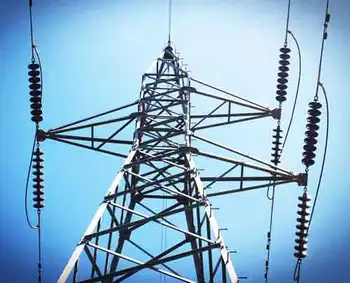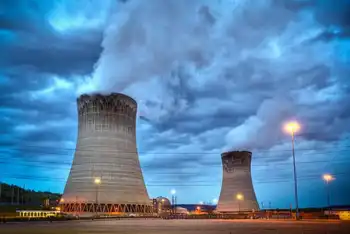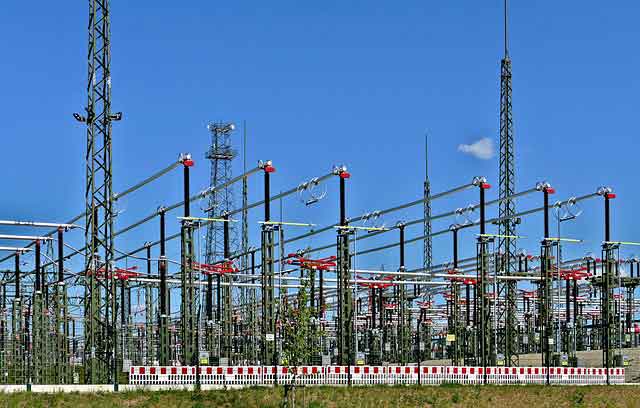China urges greenhouse gas caps, peak in 2030
By Reuters
NFPA 70b Training - Electrical Maintenance
Our customized live online or in‑person group training can be delivered to your staff at your location.

- Live Online
- 12 hours Instructor-led
- Group Training Available
The call for "quantified targets" to cap greenhouse gas pollution marks a high-level public departure from China's reluctance to spell out a proposed peak and date for it.
"By 2008 China had become the world's biggest national emitter of greenhouse gases and faces unprecedented challenges," says the preface of the 900-page report, setting aside China's reluctance to say it has passed the United States as the top emitter of carbon dioxide, the main greenhouse gas from burning coal, gas and oil.
"As soon as possible, study and draft relative and (then) absolute targets to cap the total volume of carbon dioxide emissions," says the preface of the report, obtained by Reuters.
"Establishing and acting on quantified targets and corresponding policies to address climate change in the medium to long-term is already a matter of great urgency."
The "2050 China Energy and C02 Emissions Report" proposes that, with the right policies, emissions growth could slow by 2020, with levels peaking around 2030.
If China can reach these goals, by 2050 its carbon dioxide emissions from fossil fuel "could fall to the same emissions levels as in 2005 or even lower," the report says.
The report in Chinese is on open sale and builds on earlier research exploring pathways to a "low-carbon" economy. It adds to recent signals that Beijing wants to play an active role in seeking agreement for a new international climate change pact.
With its fast-rising greenhouse gas emissions, China's stance will be crucial in efforts to create a successor to the current Kyoto Protocol, which expires at the end of 2012.
Western nations have pressed Beijing to set specific goals on slowing emissions growth in coming years, leading to early cuts in absolute volumes as part of a new pact governments hope to seal in Copenhagen by the end of 2009.
Under current treaties, China and other developing countries need not shoulder the quantified limits on emissions that rich economies must take on.
Beijing has said that principle must not change and resisted specifying when its emissions may peak, pointing out its average emissions per person remain much lower than the average in rich nations.
But the airing of proposals for emissions caps comes after signs that Beijing has become more open to stronger steps against global warming as negotiators struggle to build agreement before Copenhagen.
"This report is intended to advise the government what its options are," said Deborah Seligsohn, China Program Director with the World Resources Institute, a Washington-based organization promoting policies to fight global warming.
"I think they're making a pretty concentrated push to move the negotiations forward," said Seligsohn.
Early this month, China's ambassador to the climate talks, Yu Qingtai, said his government wanted to curb greenhouse gas emissions as soon as possible.
The Standing Committee of China's parliament — a Communist Party-controlled body that echoes government priorities — will consider a separate report on climate change policy and a resolution on the issue, the Xinhua news agency said.
The dozens of contributors to the "2050 China Energy" report included climate policy experts from Chinese state think-tanks, including the Energy Research Institute and the State Council Development Research Center, which advises the cabinet.
Participating scholars stressed that the study was a research exercise, not a definitive policy blueprint, and there was no suggestion that the senior officials listed as its advisers endorsed its specific proposals for targets and a 2030 peak.
But the proposals have been circulated among officials and were echoed in a cabinet meeting last week that urged making "controlling greenhouse gas emissions" an important part of development plans, said an expert familiar with the project, speaking on condition of anonymity.
The report spells out possibly disastrous consequences of global warming, as growing amounts of human-caused greenhouse gases retain more of the sun's energy in the atmosphere.
"The potential threat to China from climate change exists and it is massive," states the report, warning of worsening droughts and floods, retreating glaciers, shrinking farm productivity and threats to water supplies for the country of 1.3 billion people.
To curb emissions, China could push financial steps and price reforms to favor clean energy, a "carbon tax" on fossil fuels and cautious steps toward a "cap-and-trade" system for buying and selling emissions rights, says the report.
Beijing may seek to use such domestic initiatives to show other nations it is serious about fighting global warming, even if the steps are not directly included in any international pact.
"The problem now is not China making its own domestic commitments and targets, it's how we treat those commitments internationally," Dai Yande, a deputy director of the Energy Research Institute and one the report's organizers, told Reuters.











